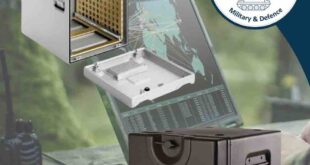Wound electrical components manufacturer REO UK has invested in several new edge winding machines at its German manufacturing headquarters.
The new machines will allow for the development of electrical components such as chokes and transformers that are lighter by up to 10% and with reduced power losses of up to 25% compared with existing products.
The edge winding technique produces coils that reduce skin effect and proximity losses compared to traditional coiling techniques.
Edgewound coils also boast a lower parasitic capacitance than other methods of winding, which reduces unwanted high frequency return paths to help components ensure electromagnetic compatibility (EMC).
In addition, the single-layered structure of the edgewound coils allows for greater and more efficient dissipation of heat. This is especially helpful in applications that require water-cooling or that are expected to operate under high levels of mechanical and thermal stress, such as leakage transformers in the rail sector or chokes used in electric vehicles (EVs) — two markets that are expected to grow in the coming years.
“Bloomberg has predicted that annual EV sales will hit 10 million over the next five years,” explained Steve Hughes, managing director of REO UK. “As this market develops, the components within those vehicles need to develop as well. Electrical components such as chokes are key in this area, and introducing edge winding into our wound components allows them to be even better suited to this application.
“With this investment, we are now able to develop new electrical components that meet the evolving needs of this ever-evolving industry. Not only does the new technique offer REO products greater heat dissipation and lower losses, it also allows us to optimise each product to meet the technical and budgetary requirements of customers. The improved cooling makes it feasible to use aluminium and copper conductors, providing more flexibility in meeting technical demands.
“The reduced losses of the edgewound coil also makes it suitable for use around silicon carbide (SiC) and gallium nitride (GaN) semiconductors, which in turn makes a much more energy efficient end-product achievable.”
REO is continuing to develop electrical components using edge winding. Currently, the winding technique is best suited to products with a current between 50 and 250 amps. REO is working on novel combinations of windings that will allow this to be increased in the future.
 Engineer News Network The ultimate online news and information resource for today’s engineer
Engineer News Network The ultimate online news and information resource for today’s engineer





